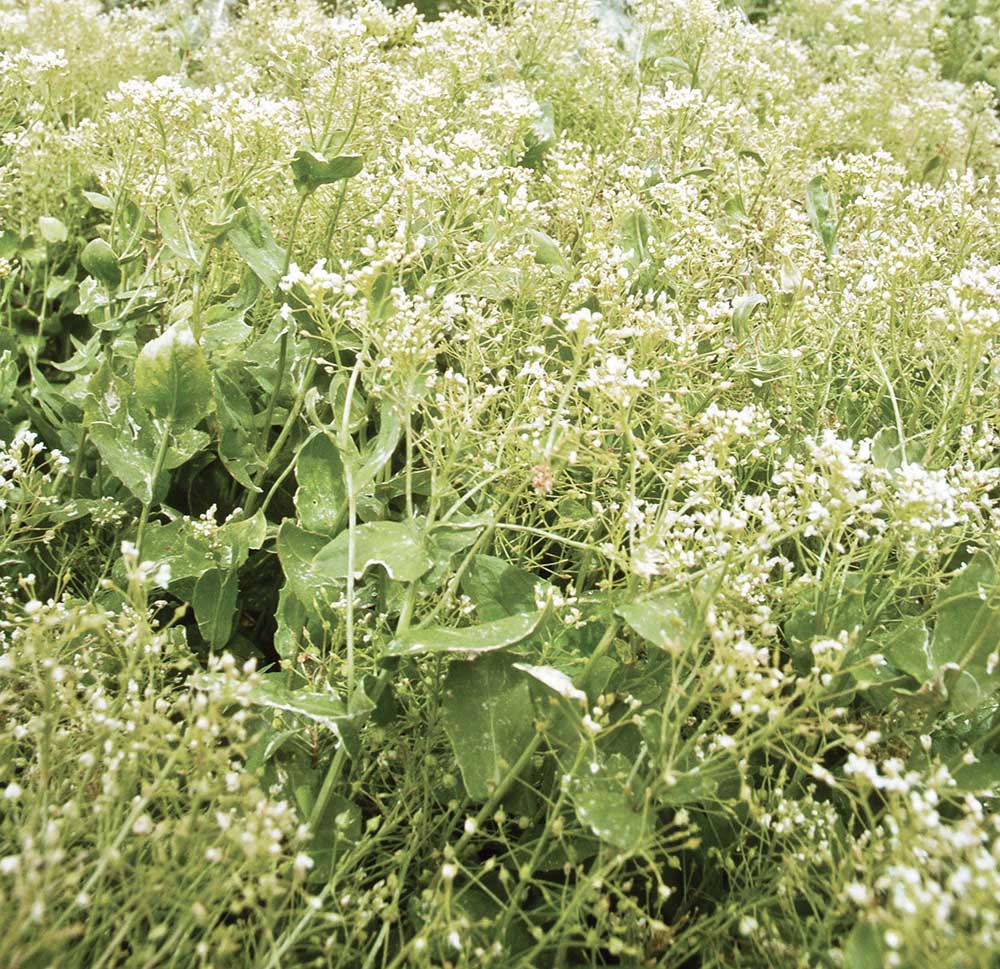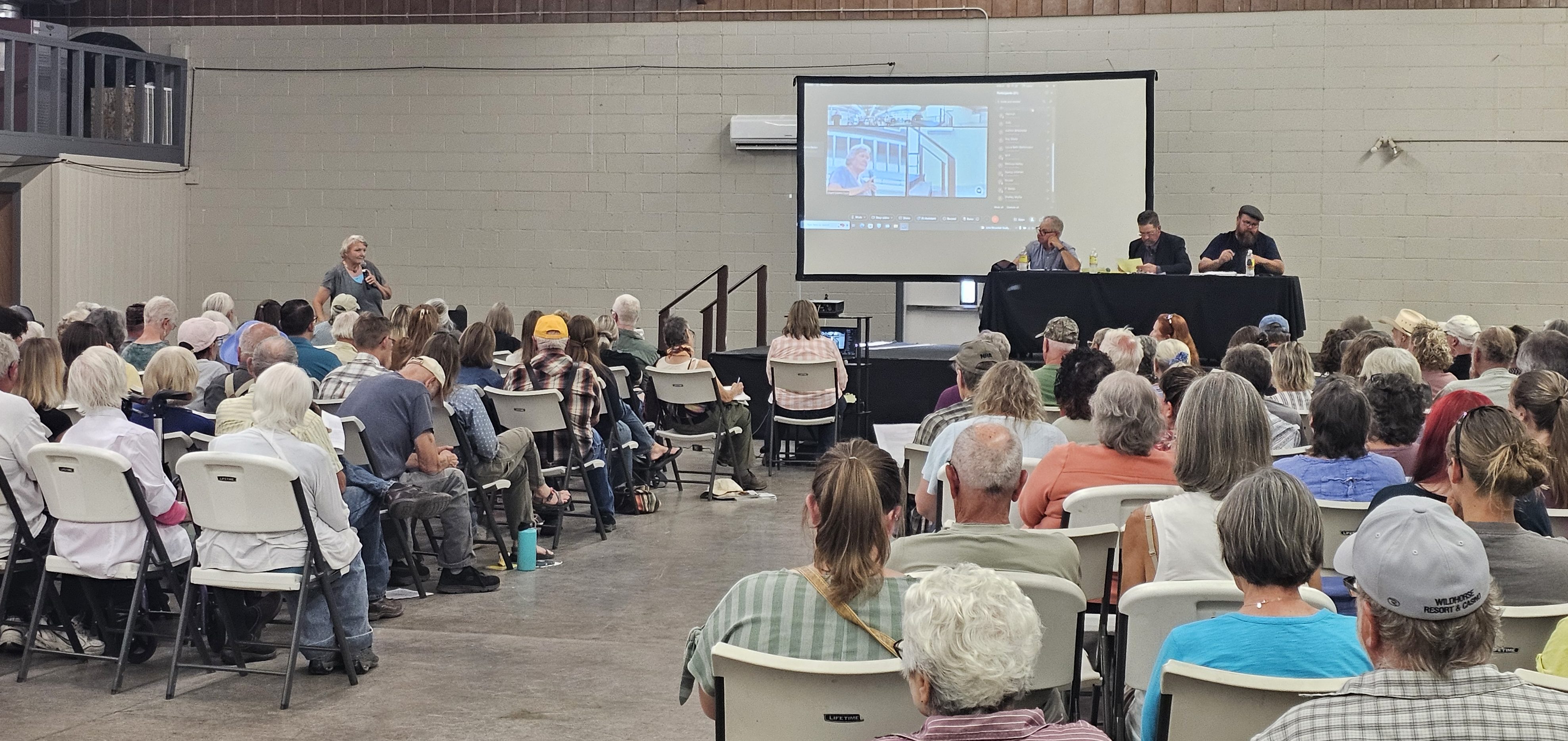Battle against noxious weeds an ongoing struggle
Published 11:01 am Friday, July 21, 2023

- Whitetop, also known as hoary cress, is a noxious weed that can form dense mats. The Baker County Weed District is offering free herbicide to residents to help control whitetop and other invasive weeds.
BAKER CITY — The farmers and ranchers gathered in a space little larger than a typical living room to ponder a problem that spreads over tens of thousands of acres.
Trending
Noxious weeds.
The species were tossed around, figuratively speaking, the names coming fast and each spoken with derision.
Whitetop.
Trending
Scotch thistle.
Rush skeletonweed.
Knapweed.
Most of the 14 people who convened in this shop in Baker City on the afternoon of June 27 are members of the Baker County Weed District advisory board.
They swapped stories from around the county and in parts of southern Union County.
The bad news is that this was a good spring for weeds.
The same conditions that benefited crops and grazing lands — widespread rain and, since early May, generally warmer-than-average temperatures — also spurred rapid growth in a variety of noxious weeds.
Those weeds can displace valuable vegetation such as native grasses that cattle eat on spring and summer range. Weeds can also reduce yields of crops, including hay.
The concern is not limited to farm and ranch land, either.
“Almost every lot in the city of Halfway has noxious weeds,” said Shella DelCurto, who lives near the town in eastern Baker County. “It was unbelievable.”
Those city weeds can spread to adjacent agriculture ground, DelCurto said.
“The weeds are doing fine,” she said with a rueful smile.
Weeds know no borders, which complicates the task of controlling their spread, said Jeffrey Pettingill, Baker County’s weed supervisor.
“Your weed program is no stronger than your neighbor’s,” he said.
Jon Woolard reported a similar situation in Baker City, where whitetop, one of the more common noxious weeds in Baker County, forms dense mats on many vacant lots.
Woolard said the spring was so damp that in many places the ground was too soft for vehicles to drive, limiting the options for spraying herbicide.
He noted that other options, including aerial spraying by drones, is becoming more prevalent.
“The technology out there is amazing,” Woolard said. “You can get more weeds sprayed with fewer people.”
Kent Justus, who lives in Keating Valley about 15 miles east of Baker City, described his ongoing battle with rush skeletonweed.
Justus said he’s been spraying patches of the weed for the past seven years.
“Every time I go back I find new plants,” he said.
With a chuckle, Justus said he would trade “all the whitetop” to be rid of the skeletonweed and an invasive grass, medusahead.
Pettingill said skeletonweed seeds can be spread by wind for up to 90 miles.
Pettingill said spring weather, which was cold and damp for about the first half of the season before temperatures rose, were ideal for native grasses and other plants that can help crowd out weeds.
But once the soil warmed in May, the weeds flourished, he said.
The advantage to that proliferation of weeds, Pettingill said, is that it gave proactive property owners a chance to target the seed source — a key to long-term control.
“This is a good year to go after weeds because every seed germinated,” he said.
So long as the weeds were treated with the appropriate herbicide, and treated before the plants produced seed, the treatment should be effective, Pettingill said.
Craig Ward, a Baker Valley farmer who is chairman of the advisory committee, said he knows of a few landowners who are starting to address whitetop infestations on their property.
Ward also noted two weeds that he found this year for the first time.
One is black henbane. Ward said he traced the source of that weed to loads of gravel he brought in for road crossings on his family’s property. Black henbane sprouted at each site, though nowhere else, Ward said.
He said he notified the contractor who supplied the gravel that the gravel pit is infested with the weed.
Ward also said he has seen patches of yellow flag iris, a species that often grows near water.
On the positive side, Ward said an herbicide he applied to control jointed goatgrass in a field was almost 100% successful at eradicating the invasive species.
Spurring interest in spraying
Ward’s experience with goatgrass isn’t the only example of recent success at combating a problem that, based solely on acreage, can seem insurmountable, Pettingill said.
He said a May 19 event near Medical Springs, in southern Union County, attracted about 35 landowners interested in learning how to control noxious weeds on their land.
Bruce Hummel, who lives near North Powder and helped organize the event, said about 1,100 acres were treated that day for whitetop, Scotch thistle, knapweed and hound’s tongue.
Pettingill said he was pleased with the turnout May 19. He sent letters about the event to around 75 landowners in the Medical Springs area.
He hopes the Medical Springs event will serve as a model for future gatherings, which can be valuable not only for the number of acres that are treated, but also for educating landowners about the assistance available.
Pettingill said one of his bigger challenges is spreading the word about how the weed district can help landowners.
For instance, the district can provide free herbicide and cover 50% of the cost of applying it, he said, which can reduce the cost to the landowner to around $10 per acre.
The weed district offers free herbicide weekly during the summer at several places around Baker County, up to 5 gallons per person. He said many of the people who show up are farmers or ranchers with far too much land to be treated with 5 gallons, but they didn’t know about the district’s cost-share program.
That program can supply enough free herbicide to treat up to 30 acres.
“My job is to educate,” Pettingill said.
He invites property owners to call him at 541-523-0618 or 541-519-0204 with any questions about noxious weeds. He said he’s happy to visit any property to examine and identify weeds and suggest the best way to tackle an infestation.









